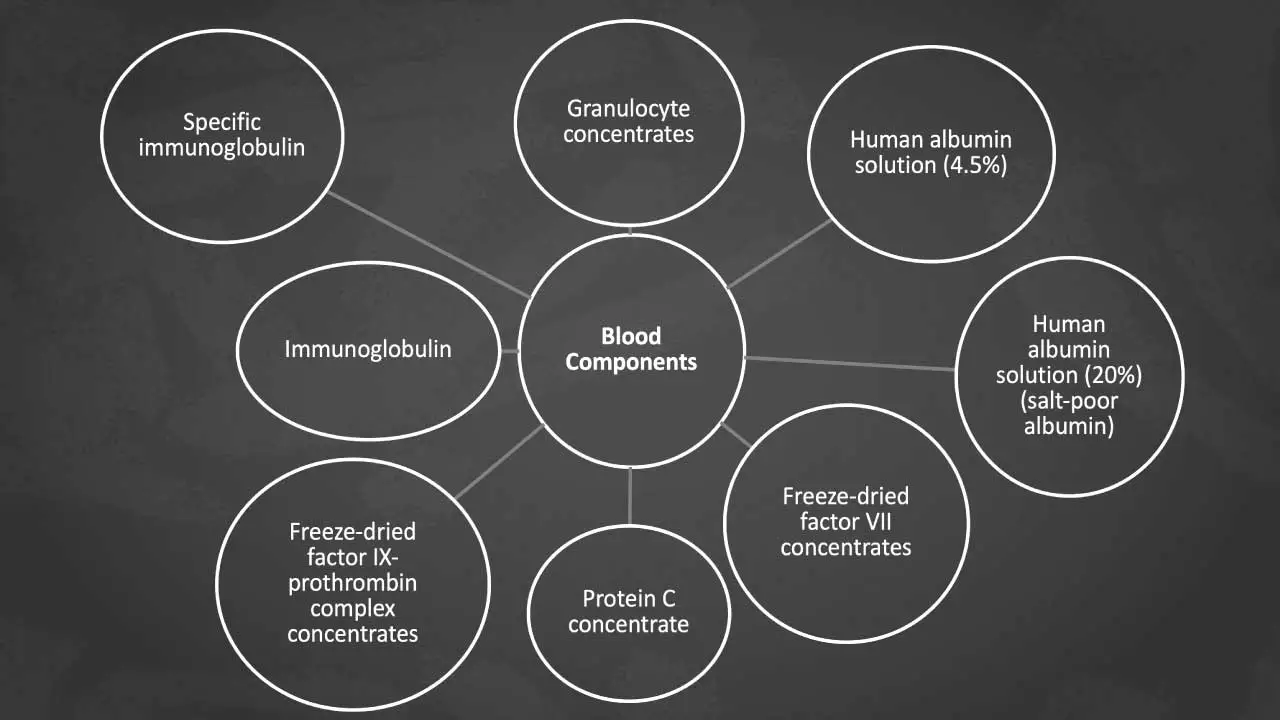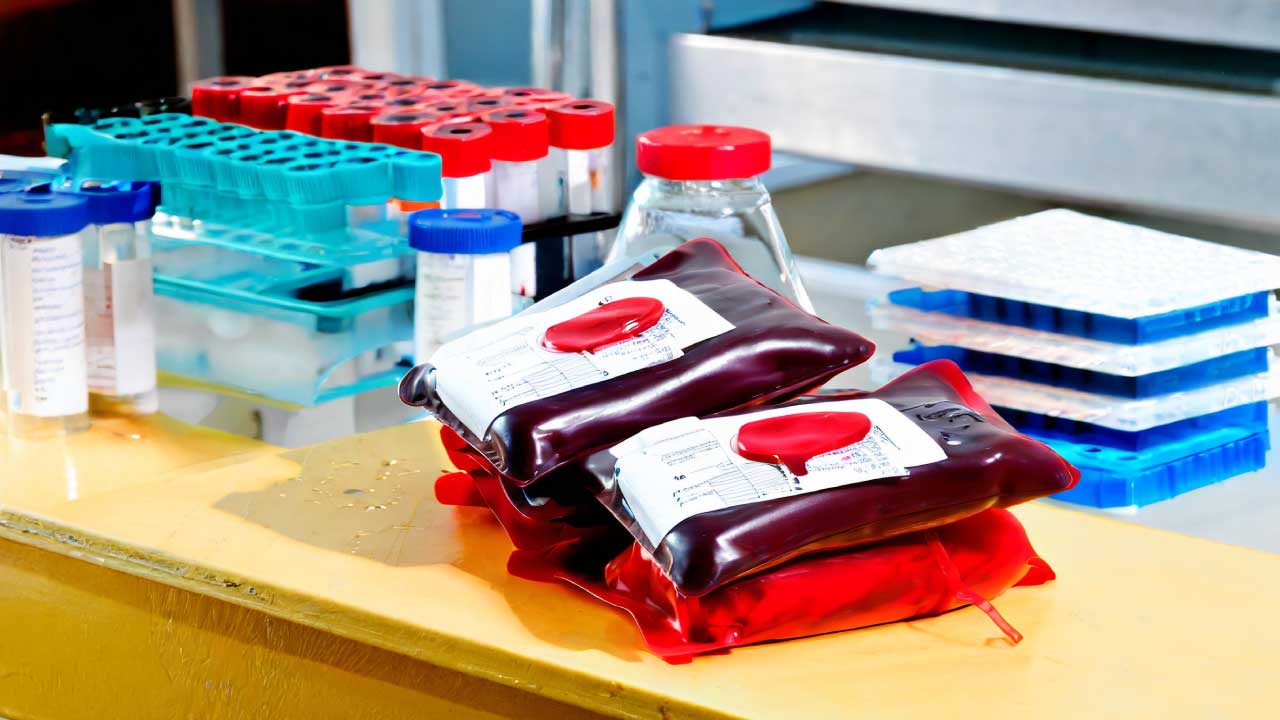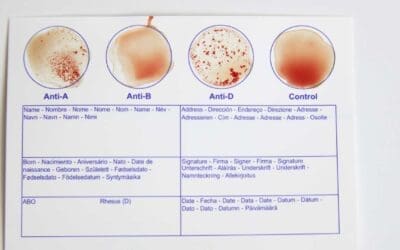TL;DR
| Expiry | Storage | Transport | Expiry | Indications |
| Whole blood | In a blood bank refrigerator at 2℃ – 6℃ | Can be transported for the next 24h if maintained at 1℃ – 10℃ during transportation | 35 days in a closed system, 24 hr in an open system | Acute blood loss Exchange transfusion Massive transfusion |
| Packed red cells | In a blood bank refrigerator at 2℃ – 6℃ | Can be transported for the next 24h if maintained at 1℃ – 10℃ during transportation | 35 days in a closed system, 24 hr in an open system | Chronic, symptomatic anaemia Acute blood loss |
| Fresh frozen plasma | In a plasma freezer at below -30℃ | Transported in frozen state | 1 year | Multiple factor deficiencies Severed liver disease Warfarin reversal |
| Platelet concentrate | In a platelet incubator with agitator at 20℃ – 24℃ with continuous gentle agitation | 20℃ – 24℃ | 5 days in a closed system, 4 hr in an open system | Bleeding due to low platelet count or impaired function |
| Cryoprecipitate | In a freezer at below -30℃ | Below -30℃ | 1 year | Fibrinogen deficiency Dysfibrinogenaemia Trauma DIC |
What happens to donated blood after blood donation?
Blood is a complex fluid that contains a variety of components, each with its own unique function. After blood collection of donated blood, blood can be separated into different components for storage and used for transfusion to treat a variety of medical conditions.
What are the common blood components derived from donated blood and what are they used for?
Whole Blood
Whole blood is the most common type of blood transfusion. It contains all of the components of blood, including red blood cells, white blood cells, platelets, and plasma. Whole blood is typically used to treat patients who have lost a large amount of blood due to trauma, surgery, or other causes. The blood is collected into a pyrogen-free anticoagulant bag without further processing.
Storage and Transportation Conditions
Whole blood should be stored at 2-6°C and transported in a temperature-controlled environment. It has a shelf life of 28 to 35 days depending on the anticoagulant or preservative used.
Indications for Use
- Acute blood loss
- Severe anemia
- Massive transfusion
- Shock
- Surgery
Leukodepleted Whole Blood
Whole blood can also be leucodepleted which must be performed soon after collection and prior to processing. A blood component is defined as leucocyte-depleted if there are less than 5 x 106/L of white cells present. Leukodepleted whole blood is whole blood that has had the white blood cells removed. This is done to reduce the risk of adverse reactions to blood transfusions, such as febrile non-hemolytic transfusion reactions (FNHTRs) and transfusion-related acute lung injury (TRALI). It is effective at preventing transmission of cytomegalovirus in countries where this has been reported.
Storage and Transportation Conditions
Leukodepleted whole blood should be stored at 2-6°C and transported in a temperature-controlled environment. It has a shelf life of 35 days.
Indications for Use
Leukodepleted whole blood is typically used to treat patients who need a transfusion of whole blood, but who are at risk of adverse reactions to white blood cells. This may include patients with:
- A history of febrile non-hemolytic transfusion reactions (FNHTRs)
- TRALI
- Sickle cell disease
- Thalassemia
- Autoimmune disorders
- Cancer
- Immunosuppression
Leukodepleted whole blood may also be used to treat patients who need a transfusion of whole blood, but who are at risk of transmitting infections through white blood cells. This may include patients with:
- HIV/AIDS
- Cytomegalovirus (CMV)
- Epstein-Barr virus (EBV)
- Human T-lymphotropic virus (HTLV)
Packed Red Blood Cells (PRBCs)
Packed red blood cells (PRBCs) are a concentrated preparation of red blood cells. They are prepared by removing most of the plasma from whole blood. PRBCs are typically used to treat patients who have anemia, a condition in which there are not enough red blood cells to carry oxygen to the body’s tissues. Packed red cells are the treatment of choice for most transfusions including chronic anemia.
Storage and Transportation Conditions
PRBCs should be stored at 2-6°C and transported in a temperature-controlled environment. They have a shelf life of 35 days.
Indications for Use
- Anemia
- Chronic blood loss
- Surgery
PRBCs may also be used to treat patients with other conditions, such as:
- Heart disease
- Sickle cell disease
- Thalassemia
- Cancer
- Surgery
Benefits of PRBCs
PRBCs have a number of benefits over whole blood, including:
- PRBCs can be transported more easily than whole blood.
- PRBCs are less likely to cause adverse reactions than whole blood.
Fresh Frozen Plasma (FFP)
Fresh frozen plasma is a component which contains labile clotting factors and other constituents for transfusion or fractionation. It is rapidly frozen after separation to achieve complete freezing within 1 hour to a core temperature of -300C. Its main use is for the replacement of coagulation factors or after massive transfusion, in liver disease and DIC, after cardiopulmonary bypass surgery, to reverse warfarin effect and in thrombotic thrombocytopenic purpura.
Storage and Transportation Conditions
FFP should be stored at -18°C or colder and transported in a temperature-controlled environment. It has a shelf life of 36 months if stored at or below -250C and 3 months if stored at -200C.
Indications for Use
FFP is typically used to treat patients with the following conditions:
- Bleeding disorders, such as hemophilia A, hemophilia B, and von Willebrand disease
- Liver disease
- Massive blood loss
- Warfarin reversal
- Thrombotic thrombocytopenic purpura (TTP)
- Hemolytic uremic syndrome (HUS)
Benefits of FFP
FFP has a number of benefits, including:
- It is a source of clotting factors, which can help to control bleeding.
- It contains proteins that can help to maintain blood volume and prevent shock.
- It can be used to treat a variety of bleeding disorders.
Platelet Concentrates
Platelet concentrates are a preparation of platelets, the cells that help the blood to clot. Platelet concentrates can be pooled from four donors of the same blood type to form 1 unit or from plateletpheresis. Platelet transfusion is used in patients who are thrombocytopenic or have platelet function disorders and who are actively bleeding as a therapeutic use or are at serious risk of bleeding as a prophylactic use. Platelet transfusions should be avoided in autoimmune thrombocytopenic purpura unless there is serious hemorrhage. They are also contraindicated in heparin-induced thrombocytopenia, thrombotic thrombocytopenic purpura and hemolytic uremic syndrome. Platelets expressing HLA class I antigens and HLA-matched or crossmatch-compatible platelets are needed for patients with HLA antibodies.
Storage and Transportation Conditions
Platelets are to be stored at 20-24°C under constant agitation throughout storage and with a shelf life of 5 days.
Indications for Use
Platelet concentrates are typically used to treat patients with the following conditions:
- Low platelet count (thrombocytopenia)
- Bleeding disorders, such as idiopathic thrombocytopenic purpura (ITP) and thrombocytopenia associated with leukemia or chemotherapy
- Massive blood loss
- Surgery
- Liver disease
Benefits of Platelet Concentrates
Platelet concentrates have a number of benefits, including:
- They can help to prevent bleeding in patients with low platelet counts or who are at risk of bleeding.
- They can help to control bleeding in patients with bleeding disorders.
- They are generally well-tolerated by patients.
Cryoprecipitate
Cryoprecipitate is a preparation of clotting factors that is derived from FFP. Cryoprecipitate is typically used to treat patients who have bleeding disorders, such as hemophilia A or von Willebrand disease.
Cryoprecipitate is obtained by thawing FFP at 4°C and contains concentrated factor VIII and fibrinogen. After thawing, the component is re-centrifuged using a hard spin at the same temperature. The supernatant, cryo-poor plasma is then partially removed while the remaining cryo-poor plasma is used for resuspension. The resulting cryoprecipitate is then rapidly frozen.
Storage and Transportation Conditions
It is stored at less than -300C or if lyophilized at 4 – 6°C. It has a shelf life of 1 year.
Indications for Use
Cryoprecipitate is typically used to treat patients with the following conditions:
- Bleeding disorders, such as von Willebrand disease and hemophilia A
- Massive blood loss
- Thrombotic thrombocytopenic purpura (TTP)
- Hemolytic uremic syndrome (HUS)
- Fibrinogen deficiency
- Hypofibrinogenemia
- Factor XIII deficiency
- Massive transfusion
- Hepatic failure
Benefits of Cryoprecipitate
Cryoprecipitate has a number of benefits, including:
- It is a source of fibrinogen, factor VIII, factor XIII, and von Willebrand factor, which are essential for blood clotting.
- It can be used to treat a variety of bleeding disorders.
- It is generally well-tolerated by patients.
Other Blood Components
In addition to the blood components described above, there are a number of other blood products that can be used for transfusion. These products include:
- Specific immunoglobulins: Specific immunoglobulin can be obtained from donors with high titres of antibody for example anti-hepatitis B or anti-rubella. These are antibodies that are used to treat certain infections and autoimmune disorders.
- Granulocyte concentrates: are prepared as buffy coats or on blood cell separators from normal healthy donors or from patients with CML. They have been used in patients with severe neutropenia who are not responding to antibiotic therapy.
- Human albumin solution (4.5%): Human albumin solution is prepared from human plasma and is a useful plasma volume expander when a sustained osmotic effect is required prior to the administration of blood. It is also used for fluid replacement in patients undergoing plasmapheresis and sometimes for fluid replacement in selected patients with hypoalbuminemia.
- Human albumin solution (20%) (salt-poor albumin): May be used in severe hypoalbuminemia when it is necessary to use a product with minimal electrolyte content. Principal indications for its use are patients with nephrotic syndrome or liver failure.
- Freeze-dried factor VIII concentrate: This is a preparation of clotting factor VIII that is used to treat hemophilia A.
- Protein C concentrates: Protein C concentrate is used in severe sepsis with DIC to reduce thrombosis resulting from depletion of protein C.
- Freeze-dried factor IX-prothrombin complex concentrates: Mainly used for treating factor IX deficiency but are also used in patients with liver disease or in hemorrhage following overdose with oral anticoagulants or in patients with factor VIII inhibitors.
- Immunoglobulin: Pooled immunoglobulin is a valuable source of antibodies against common viruses. It is used in hypogammaglobulinemia for protection against viral and bacterial disease. It may also be used in immune thrombocytopenia and other acquired immune disorders.

Disclaimer: This article is intended for informational purposes only and is specifically targeted towards medical students. It is not intended to be a substitute for informed professional medical advice, diagnosis, or treatment. While the information presented here is derived from credible medical sources and is believed to be accurate and up-to-date, it is not guaranteed to be complete or error-free. See additional information.
References
- Dean L. Blood Groups and Red Cell Antigens [Internet]. Bethesda (MD): National Center for Biotechnology Information (US); 2005. Chapter 5, The ABO blood group.
- Yamamoto F. ABO+logy: Bioscience of the ABO Blood Groups for High School/College Students & Adults (2023).
- Goldberg S, Hoffman J. Clinical Hematology Made Ridiculously Simple, 1st Edition: An Incredibly Easy Way to Learn for Medical, Nursing, PA Students, and General Practitioners (MedMaster Medical Books). 2021.




